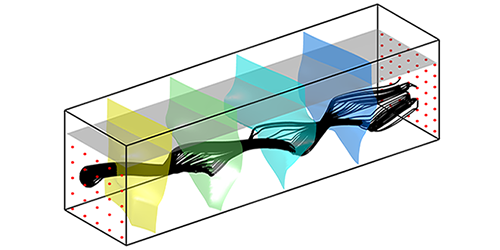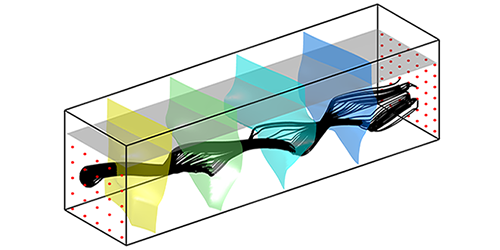Twisted Fluid Flows
Many industrial applications and environmental processes depend on liquids mixing with other liquids, often within anisotropic, porous media such as stratified sedimentary deposits. However, laboratory studies of fluid flows in porous media have largely focused on simple one-dimensional or two-dimensional setups. Now, a research team has experimentally shown that solutions are transported in twisted patterns through a three-dimensional anisotropic medium mimicking sedimentary geologic formations. The twisty flow patterns enable solutions to mix more completely into a surrounding liquid. The effect could be useful for designing efficient chemical-reactor vessels or studying contaminant transport in aquifer systems.
Massimo Rolle, at the University of Tübingen in Germany, and his team studied fluid flows in a flow chamber containing layers of alternating stripes of differently sized glass beads. The authors filled the 30-centimeter-long chamber with water, injected a liquid fluorescent tracer into one of the chamber’s inlet ports, and then sampled the concentration of the tracer at the chamber’s outlet ports. The team found that the peak tracer concentration at the chamber’s output was often significantly offset both vertically and horizontally from the point of injection. This finding implies that the tracer solution, as it passed through the flow chamber, twisted and deformed because of the different permeabilities of the chamber’s layers. The researchers also showed that the tracer diffused into the surrounding water over twice as thoroughly when the glass beads were arranged in alternating angled stripes than when they were placed in homogenous packings.
This research is published in Physical Review Letters.
–Katherine Kornei





